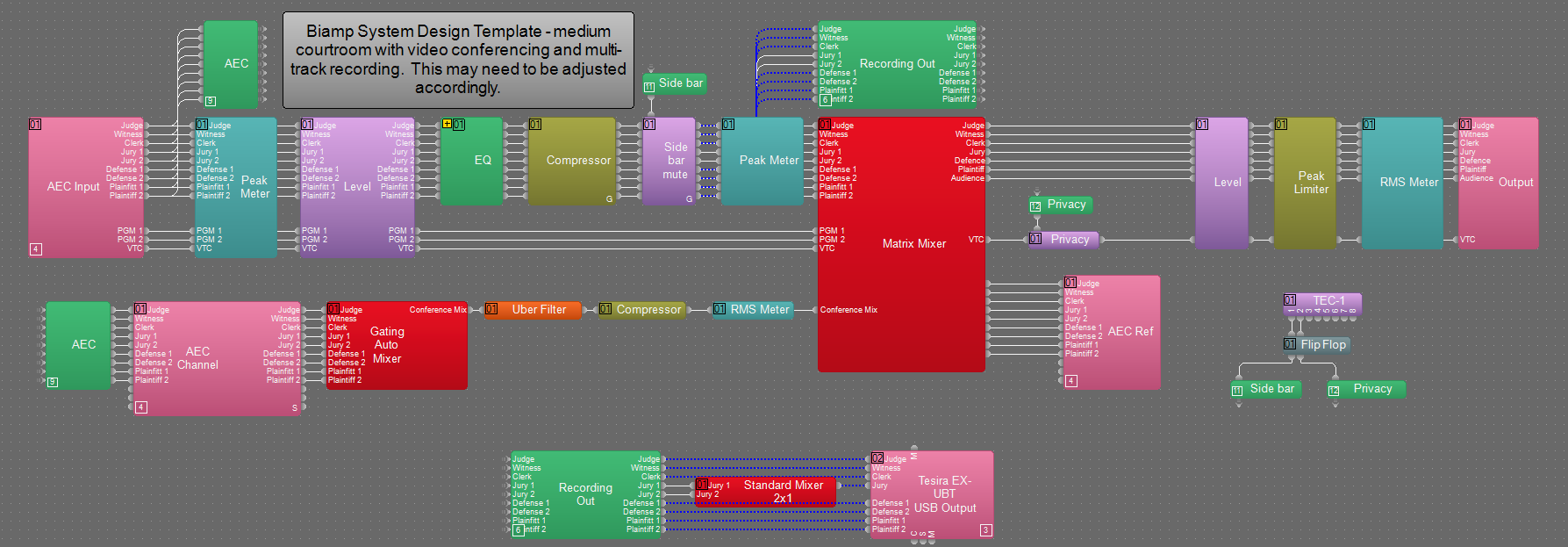Medium courtroom with video conferencing and multi-track recording
This system design template demonstrates how to outfit a medium-sized courtroom with a single TesiraFORTÉ AVB CI. The system will include a mix-minus local reinforcement system, multi-track recording of each position as well as the ability to video conference through a third party video conferencing codec.
Each of the courtroom positions will have its own microphone including the judge, clerk, witness, two at the defense stand and two at the plaintiff stand. The jury will be captured with 2 ceiling microphones. Each location has its own speaker zone allowing for mix-minus speech reinforcement with the addition of an audience zone. Both the judge and the clerk will have a TEC-1 for control and mute as well as the ability to play program audio.
Room design
- 9 microphones; goosenecks for judge, clerk, witness, jury, defense and plaintiff.
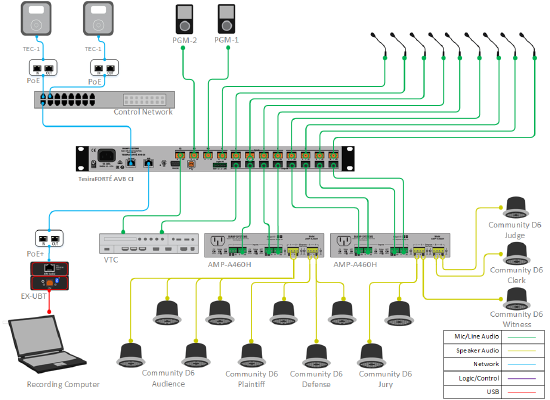
- 7 speaker zones for each courtroom position operated in a mix-minus configuration for local voice-lift.
- Video conferencing codec integration with AEC processing handled by the TesiraFORTÉ.
- 2 Program audio inputs.
- 2 TEC-1's for judge and clerk position control of volume and mute states.
- 8 channel multi-track USB recording extended over AVB with the Tesira EX-UBT
Equipment list
Below is the list of Biamp equipment used in this project:
- 1 - TesiraFORTÉ AVB CI 12 mic/line level inputs with AEC; 8mic/line level outputs; AVB networked audio; USB audio
- 1 - Tesira EX-UBT AVB network USB extender; Bluetooth audio
- 2 - Tesira AMP-A460H 4-Channel, 60W class D amplifier; supports both 70V and 100V constant-voltage speaker systems
- 2 - Tesira TEC-1i/s Tesira PoE Ethernet control device, in-wall/surface mount
- 13 - Community D6 Two-way, full-range, coaxial ceiling loudspeaker, 8 ohm or 70V/100V operation, 100W continuous, 250W program
Note that other non-Biamp equipment is required, including the, video conferencing codec, PoE+ injector(s), and a network switch.
Example File
The file provided is built ready to load, adjust gain structure, and tune. According to your room design and courtroom positions, changes may need to be made.
The microphones will need to be split right at the input for an AEC processed path, and a dry path. The dry path will bypass AEC, but still be processed for local reinforcement. The AEC path will be sent through the AEC channel block and a gating auto-mixer for management of the conference audio.
The two input paths, dry and AEC, are separated by a split pass-through so you can treat them as separately processed signals paths to help fight latency in the locally reinforced audio. A branch of the dry audio, post sidebar mute, is taken through a split pass-through to feed the EX-UBT block to be recorded over USB. With only 8 channels of audio available with the EX-UBT the Jury area microphones will be mixed down to one channel. If you wish to archive any side-bar conversations you may wish to move the split pass through to pre sidebar mute.
The use of split pass-through blocks and custom blocks are used to clean up the file and make for a clean workflow.
The example file can be downloaded here Medium courtroom with video conferencing
Network design
The control processing in the system is simple, needing a single switch for the TesiraFORTÉ and two TEC-1's to communicate. The TEC-1's do not need AVB to communicate, but if you were to get an AVB switch, then the EX-UBT could also exist on that switch in a converged network. If you do not have access to an AVB switch, then you will need to configure the TesiraFORTÉ in separated networks mode. In the article detailing separated or converged control and AVB networks follow the steps for a separated network model, that way you can connect the EX-UBT directly into the AVB Only port of the TesiraFORTÉ (PoE+ injector needed for power).
Audio setup
This audio system will consist of a locally reinforced 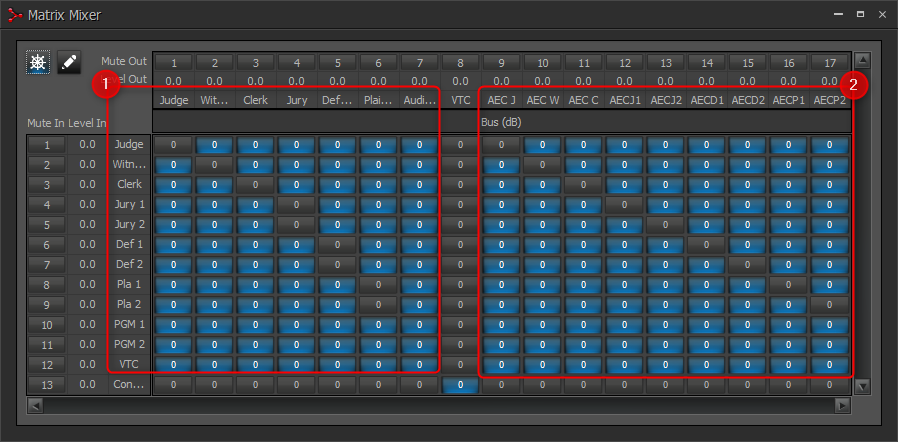 mix-minus system with the addition of program audio and video conference audio. The use of a mix-minus system allows each mic to be reinforced to the positions of the courtroom with the least potential of feedback (1). All of the mixing in this scenario will need to be set manually and use of an auto-mixer or AGC can damage the efficiency of the mix-minus system, potentially causing feedback. With proper gain structure and processing the system should be able to be set and left.
mix-minus system with the addition of program audio and video conference audio. The use of a mix-minus system allows each mic to be reinforced to the positions of the courtroom with the least potential of feedback (1). All of the mixing in this scenario will need to be set manually and use of an auto-mixer or AGC can damage the efficiency of the mix-minus system, potentially causing feedback. With proper gain structure and processing the system should be able to be set and left.
With all of the microphones being used for local reinforcement and video conferencing, a mix minus system must be setup for the AEC reference (2). This allows all program and video conference audio as well as other reinforced microphones to be echo-cancelled to deliver clear conference audio tailored for each individual microphone.
Multi-track recording
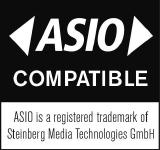 Using the Tesira EX-UBT gives you the ability to send 8 channels of audio over USB. When used with a recording software you can capture each talker for accurate archiving. The EX-UBT eliminates the need for USB extenders, it uses implicit AVB to reliably transmit the audio to the limitations of Ethernet. This allows the TesiraFORTÉ to be in a centralized rack room but the archival PC to be controlled by the clerk in the courtroom using only a standard USB cable to connect.
Using the Tesira EX-UBT gives you the ability to send 8 channels of audio over USB. When used with a recording software you can capture each talker for accurate archiving. The EX-UBT eliminates the need for USB extenders, it uses implicit AVB to reliably transmit the audio to the limitations of Ethernet. This allows the TesiraFORTÉ to be in a centralized rack room but the archival PC to be controlled by the clerk in the courtroom using only a standard USB cable to connect.
In order to utilize the Tesira EX-UBT's eight channel output, you must pair it with the Tesira USB audio driver allowing the windows PC to interface with all eight channels. The driver will require previous ASIO drivers to be uninstalled prior to installation. Failure to uninstall previous ASIO drivers will cause the Tesira USB audio driver to not perform as intended. Macs will natively be able to interface with more than two channels of audio over USB.
Control programming
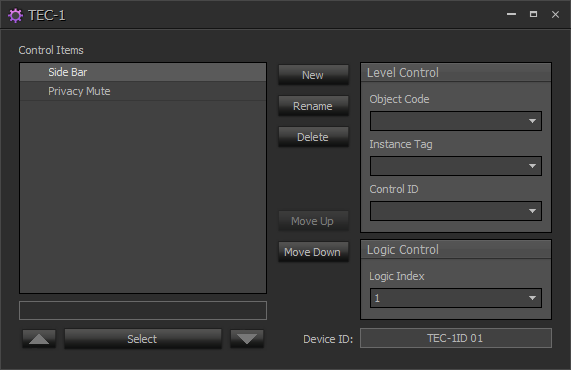
The TEC-1 Programming will be used for VTC privacy mute and side bar conversations, muting all microphones. These are controlled via logic out of the TEC-1 so any further control you wish to provide to the clerk and judge position can be programmed here.
The system is programmed using one TEC-1 DSP block being controlled by 2 physical TEC-1's. When you program two TEC-1's with the same Device ID, you force those to mirror one another. This gives the judge and clerk equal control and the power to override controls others placed.


